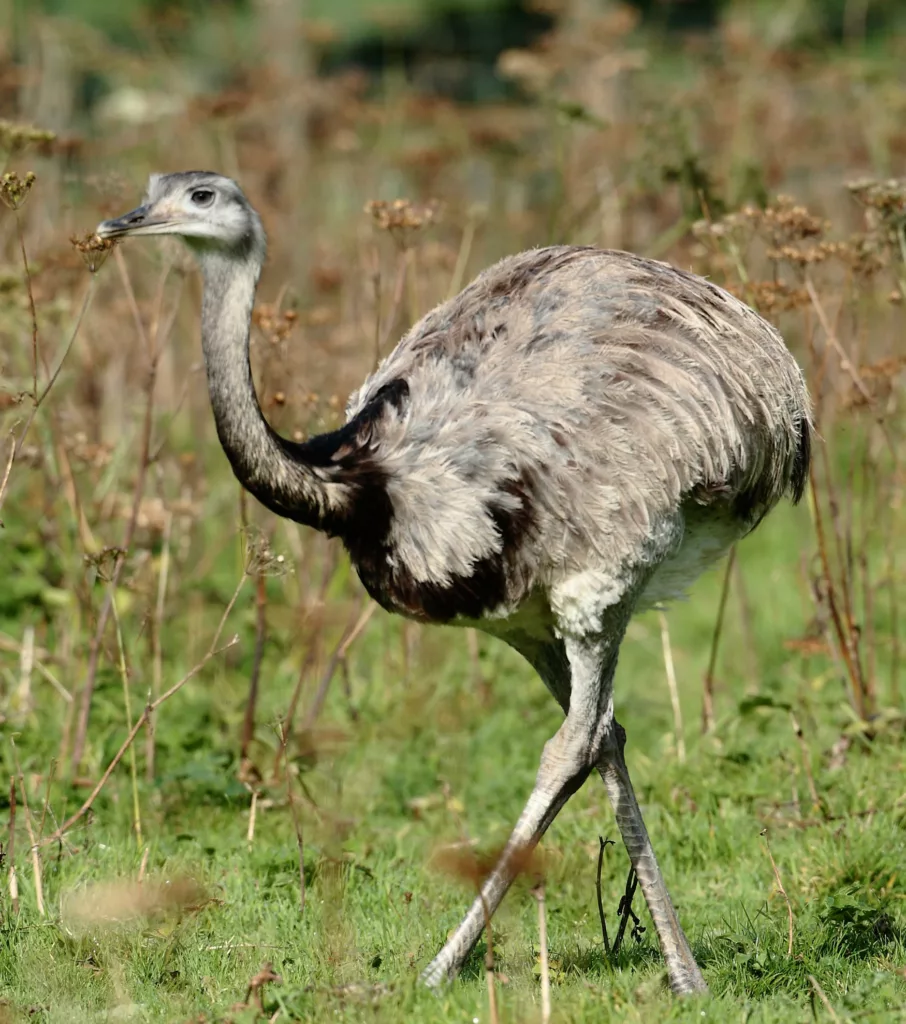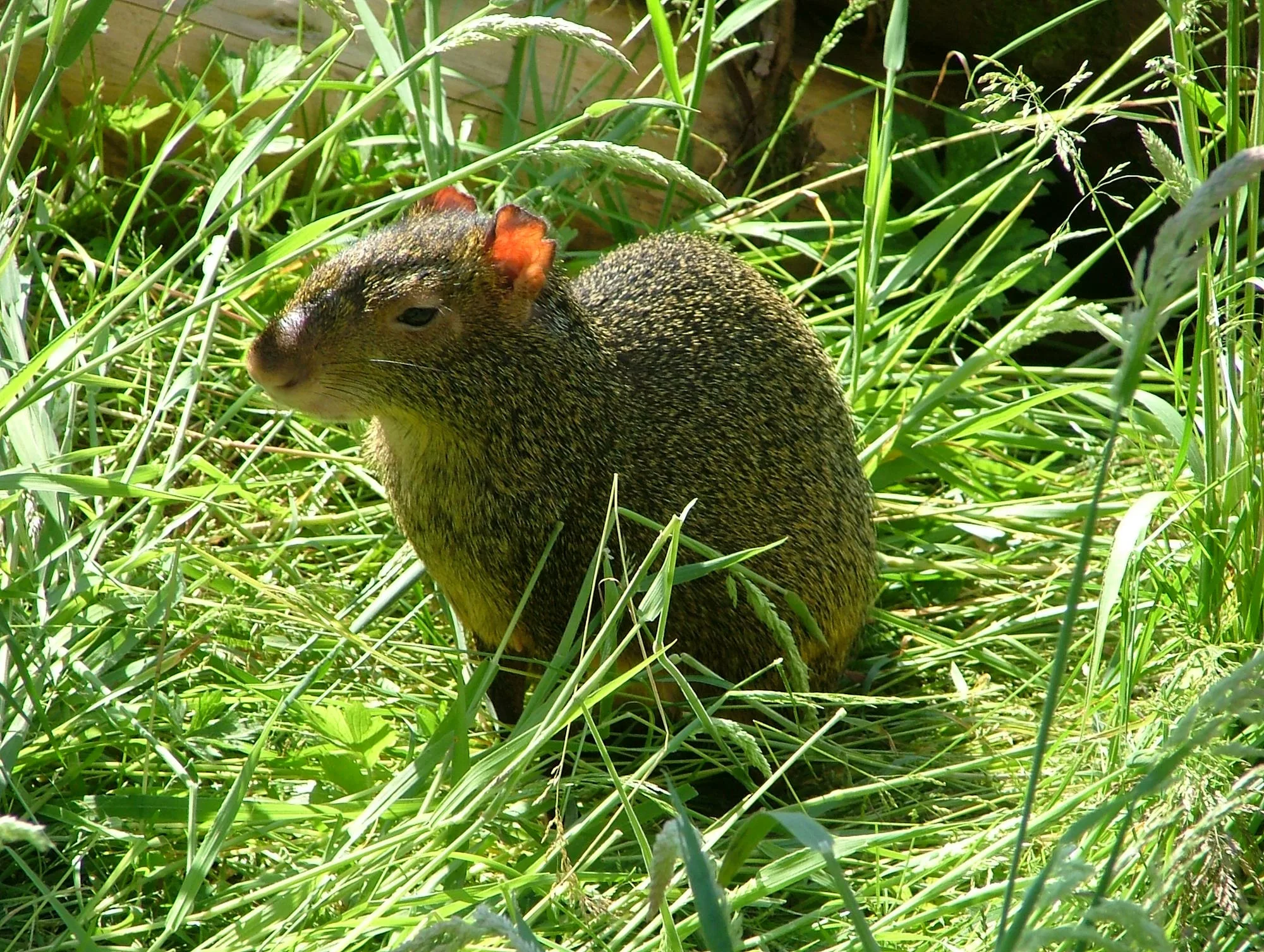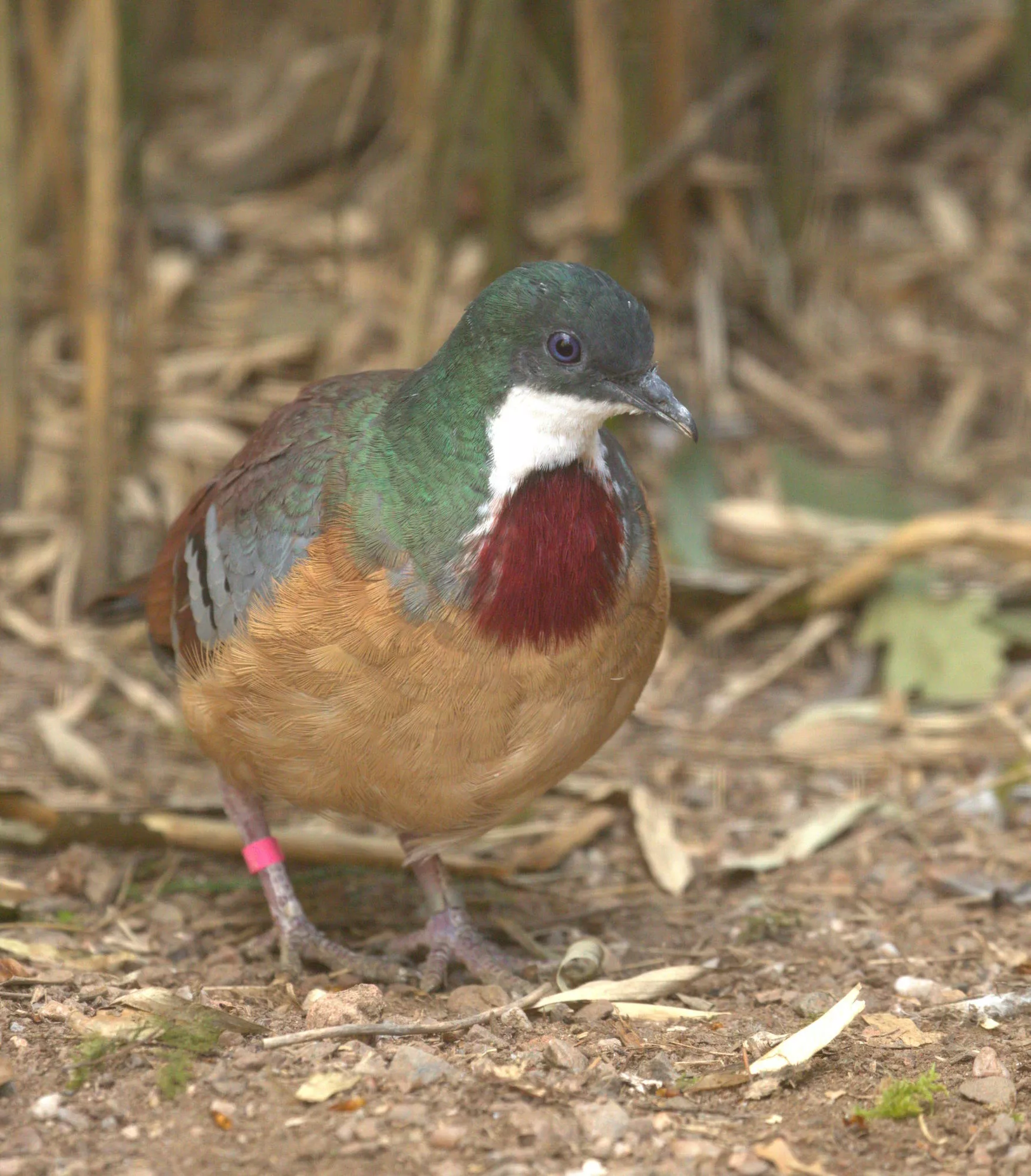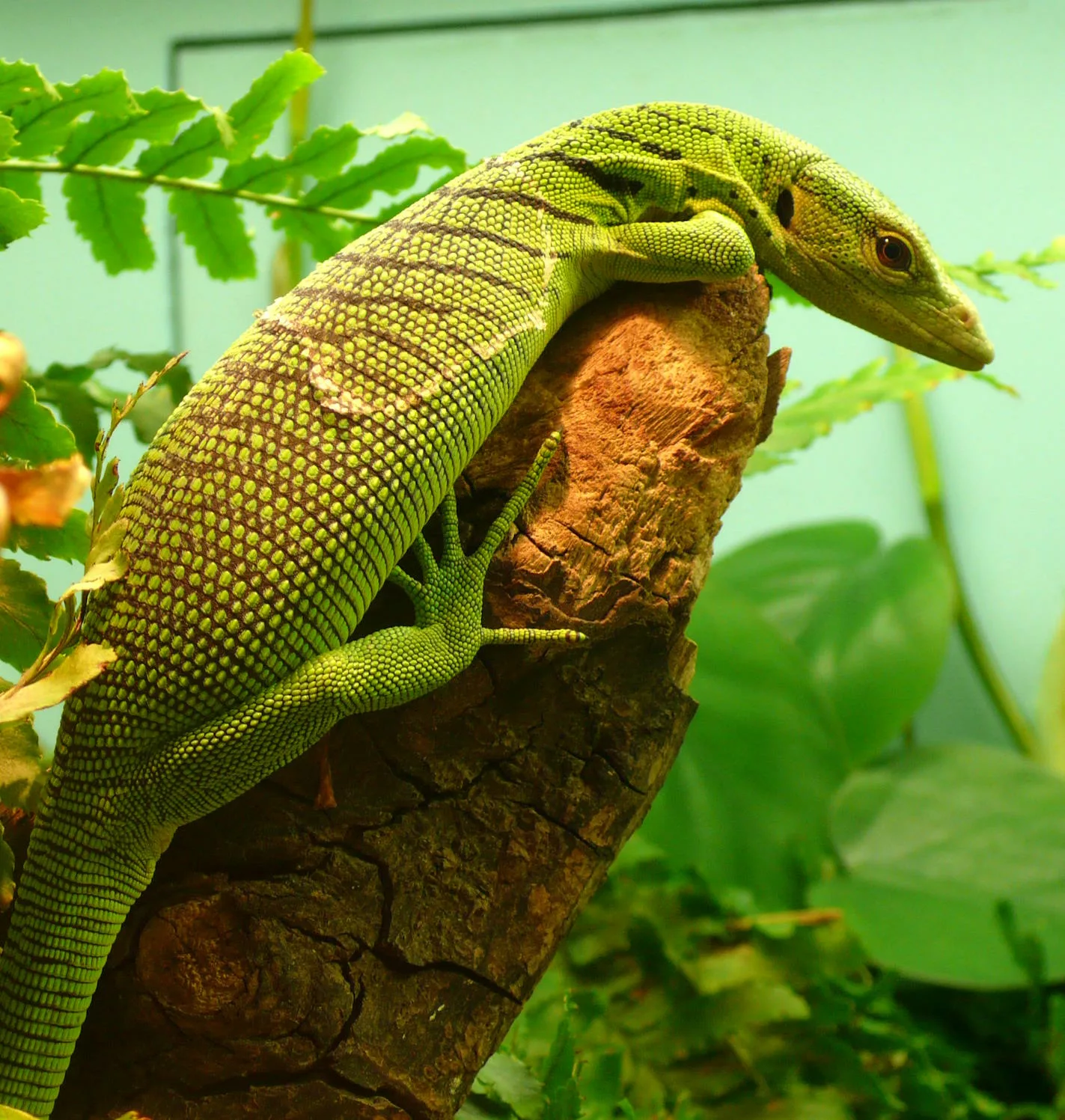
Lesser rhea
Scientific name: Rhea pennata
IUCN listed as: Least Concern
Learn before you visit!
Here are some facts about the species – Discover what they eat, find out about their natural habitat, see what they like to do, and more… Set the reading style to suit you too, everyday speak or something aimed towards children.
Child-friendly
Everyday
Diet
The Lesser Rhea is an omnivore, primarily feeding on a variety of plant materials such as grasses, leaves, and seeds. It also consumes insects, small reptiles, and other invertebrates to supplement its diet, especially during the breeding season when protein needs are higher. This dietary flexibility helps it adapt to the varying availability of food resources across its habitat. Lesser Rheas forage by walking slowly and pecking at food on the ground, often seen in groups which may help in locating food sources. Their diet plays a significant role in seed dispersal, contributing to the ecosystem’s health.
Lesser Rheas eat both plants and small animals. They munch on grasses, leaves, seeds, insects, and even small reptiles. This helps them stay healthy and strong. They walk around looking for food on the ground, often in groups. Eating seeds also helps plants grow in new places.
Breeding
Breeding season for the Lesser Rhea occurs from September to January. Males are polygamous, mating with several females and taking on the sole responsibility of incubating the eggs and rearing the chicks. After the females lay their eggs in a communal nest made by the male, they leave to find other mates. The male incubates the eggs for about 30-44 days, fiercely protecting the nest from predators and other threats. Once hatched, the chicks are cared for by the male for several months until they can fend for themselves.
Lesser Rheas breed from September to January. Male rheas look after the eggs and baby rheas, while the females lay the eggs and leave. The male sits on the eggs for about a month, keeping them safe and warm. When the chicks hatch, the father takes care of them until they are old enough to live on their own.
Habitat
The Lesser Rhea inhabits open grasslands, shrublands, and desert areas in South America, particularly in Patagonia and the Andean regions. They prefer areas with low vegetation where they can easily spot predators while foraging. These birds are well adapted to arid and semi-arid environments, able to survive in regions with extreme temperatures and scarce water sources. Habitat loss due to agricultural expansion and land conversion poses a significant threat to their populations. Conservation efforts focus on protecting and restoring their natural habitats.
Lesser Rheas live in open areas like grasslands and deserts in South America. They like places with low plants so they can see danger coming. They can live in very hot and dry places with little water. Farming and land changes are making it hard for them to find homes. Protecting their habitats helps them survive.
At the zoo
In zoos, Lesser Rheas require large enclosures that mimic their natural habitat, providing ample space for running and foraging. They benefit from a varied diet that includes both plant and animal matter to meet their nutritional needs. Zoos often participate in breeding programs to help maintain genetic diversity and support conservation efforts. Environmental enrichment, such as hiding food to encourage natural foraging behaviour, is crucial for their well-being. Educational programs in zoos highlight the species’ ecological role and conservation status, raising public awareness.
In zoos, Lesser Rheas live in big spaces where they can run and look for food. They eat a mix of plants and small animals, just like in the wild. Zoos help with breeding to keep the species healthy and strong. Visitors learn about Lesser Rheas and how important they are to nature.
Behaviour
Lesser Rheas are social birds, often seen in small flocks except during the breeding season when males become solitary. They are flightless but can run at high speeds to escape predators, using their wings for balance. Communication includes vocalizations and physical displays, especially during the breeding season when males attract females and defend their territory. They exhibit dust-bathing behaviour, which helps in parasite control and feather maintenance. Being primarily ground-dwellers, they rely on their keen eyesight to detect threats and forage efficiently.
Lesser Rheas are social and like to be in small groups. They can’t fly but are super fast runners. They make sounds and show off to talk to each other, especially during breeding time. They take dust baths to keep clean and healthy. They watch for danger with their sharp eyes.
Fun facts
- Lesser Rheas are also called Darwin’s Rheas after Charles Darwin.
- They can run up to 60 km/h (37 mph) to escape predators.
- The male rhea takes care of the eggs and chicks by himself.
- Their eggs are big, about the size of a grapefruit.
- Lesser Rheas use their wings for balance while running, not for flying.
- Lesser Rheas are named after the famous scientist Charles Darwin.
- They can run as fast as a car on a city street to get away from danger.
- The dad rhea takes care of the babies after the mom lays the eggs.
- Their eggs are really big, almost as big as a small melon.
- They use their wings to help them run fast, not to fly.
More animals to discover at our zoo
Quick Links
Tickets & Prices
You can buy tickets for Exmoor Zoo securely online, as well as finding out more price options, discover offers, and more…
What’s on…
Exmoor Zoo hosts incredible Events all through the year. You can find out about what we’ve got in store here…
Routes & info
Like any great discovery, Exmoor Zoo can feel a little off the beaten path – but don’t worry – you can plan your journey with our recommended routes and other useful travel info.



























